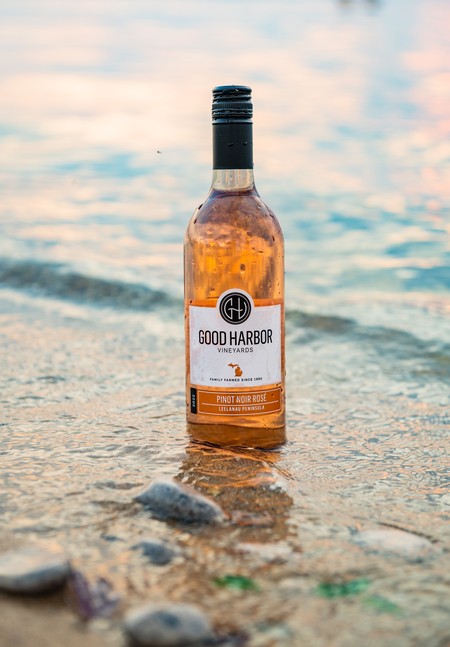The Ultimate Guide to Rosé Wine
The Ultimate Guide to Rosé Wine
 Few wines evoke the spirit of summer quite like a rosé. With its delicate hues, refreshing acidity, and diverse array of flavors, rosé wines have captured the hearts of wine enthusiasts around the globe. Whether sipped leisurely on a sunny terrace or paired with a gourmet meal, rosé offers a versatile and approachable option for both novice and seasoned connoisseurs alike. Here’s a brief guide to finding the right rosé wine for you and the best way to enjoy it.
Few wines evoke the spirit of summer quite like a rosé. With its delicate hues, refreshing acidity, and diverse array of flavors, rosé wines have captured the hearts of wine enthusiasts around the globe. Whether sipped leisurely on a sunny terrace or paired with a gourmet meal, rosé offers a versatile and approachable option for both novice and seasoned connoisseurs alike. Here’s a brief guide to finding the right rosé wine for you and the best way to enjoy it.
In the world of wine, rosé is not a specific type of grape like Pinot Gris or Chardonnay, but more of a genre of wine. The production of rosé wines is similar to those of other red wines but the amount of contact the juice has with the skins is cut shorter. This is what gives this delicious wine its signature pink hue.
Rosé wines are usually a blend but in some cases, it can be a single varietal made with one type of grape - like the Good Harbor Vineyards Pinot Noir Rosé. The most common red grapes for rosé wine include Grenache, Sangiovese, Syrah, Mourvèdre, Carignan, Cinsault, and Pinot Noir.
Approximately 1 in 10 bottles of wine consumed worldwide is a bottle of rosé. In 2021, the United States was one of the three top countries for rosé wine consumption behind France and Germany. These three countries account for 60% of the global rosé consumption.
Taste Profile
When enjoying a glass of rosé, your palate will be met with fresh and fruity flavors. The flavors you can expect with every sip include:
- Red fruits like strawberries, cherries, and raspberries
- Flowers
- Citrus
- Melon
- Celery
 But, depending on the type of grapes used when producing the delicious pink drink, the final product can range from savory to dry to sweet. While there is a wide range of finishes for rosé wines, most will lean toward the dry side.
But, depending on the type of grapes used when producing the delicious pink drink, the final product can range from savory to dry to sweet. While there is a wide range of finishes for rosé wines, most will lean toward the dry side.
Food Pairing
Since it is best known for its al fresco-friendly sipping style, the popular blush wine will pair well with a wide variety of cuisine.
Light and dry rosés complement salads, pasta, rice dishes, and seafood beautifully. A Pinot Noir Rosé is versatile and also matches light desserts. For bolder dishes, a medium-bodied rosé enhances flavors with anchovies, olives, and herbs - perfect with paella, grilled meats, or charcuterie. Fruity rosés are ideal with spicy dishes, barbecue, and soft cheeses, and they pair splendidly with peaches.
Sparkling rosé is the go-to party drink pairing exquisitely with desserts and fruit tarts, but versatile enough to go with lobster or shrimp.
Serving Rosé Wine
Just like the varying methods to produce rosé wine, the way it is served can significantly impact the drinker’s experience. This genre of wine is best served chilled so the crispness and fruitiness can shine. Just be careful not to over-chill your wine! If it is too cold, its subtleties and character could get lost.
Like white wine, rosé should be stored in the fridge for at least a few hours before it’s opened. But, instead of putting it in an ice bucket after removing it from the refrigerator, you should let it sit on the table to breathe. It should only be put back if the room temperature is causing the bottle to sweat or become warm too quickly. Pouring the wine into a glass and letting it sit for a few minutes can also help it reach the perfect temperature.
 Glassware
Glassware
Like with red and white wine, rosé wine can be enjoyed in any type of wine glass. But, using the right glass can bring out flavors in the wine you might be missing if you are using a standard-shaped glass. Experts recommend serving rosé wines in a small type of wine glass, usually tulip-shaped Champagne glasses. These glasses help the wine maintain a cooler temperature and preserve the fruity flavors.
Decanting
Should you decant rosé since it is produced using red wine grapes? Decanting wine exposes oxygen to the wine and brings out its flavors. While this is usually good practice, rosé wines don’t necessarily need to go through this process.
Rosé is like that laid-back, classy relative everyone loves - it’s got a range of tastes that pretty much anyone can enjoy. It’s the kind of drink that fits right in, whether we’re just hanging out in the backyard or dressed up for a fancy party. Picture this: sipping rosé on a warm afternoon or toasting with it under a starlit sky. It’s all about embracing those little joys and making the most of every moment together.